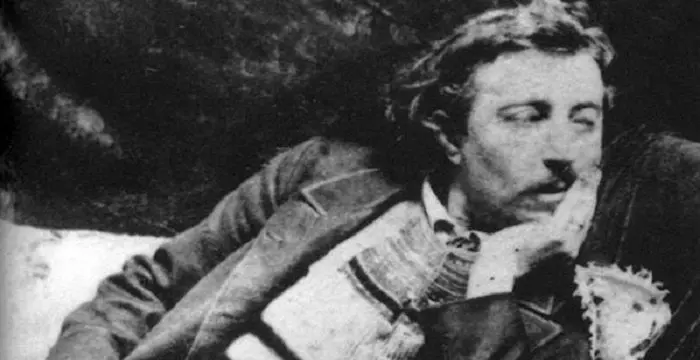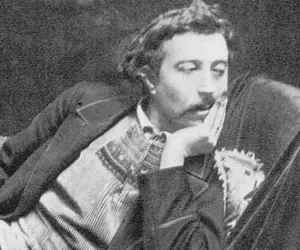
Paul Gauguin - Artist - Painting, Family and Childhood
Paul Gauguin's Personal Details
Paul Gauguin was a leading French Post Impressionist painter known for his use of bold colours and synthetist style
| Information | Detail |
|---|---|
| Birthday | June 7, 1848 |
| Died on | May 8, 1903 |
| Nationality | French |
| Famous | Artists, Miscellaneous, Artist - Painting, Ceramics, Engraving, Sculpture |
| City/State | Paris |
| Spouses | Mette Sophie Gad |
| Siblings | Mari |
| Known as | Eugène Henri Paul Gauguin |
| Childrens | Aline, Clovis, Emile, Germaine Chardon, Jean René, Pola |
| Cause of death |
|
| Birth Place | Paris |
| Gender | Male |
| Father | Clovis Gauguin |
| Mother | Aline Marie Chazal |
| Sun Sign | Gemini |
| Born in | Paris |
| Famous as | Artist - Painting, Sculpture, Ceramics, Engraving |
| Died at Age | 54 |
Paul Gauguin's photo
Who is Paul Gauguin?
Eugene Henri Paul Gauguin, better known as Paul Gauguin, was a leading French artist of the Symbolist art movement of the early 20th century. As a Post Impressionist artist who was also a sculptor, print-maker, and writer, he gained significance only after his death. His works were largely unrecognized during his lifetime. He was known to experiment with bold colours and exaggerated body proportions which in a way led to the Synthetist style of modern art. He also played an important role in the cloisonnist style of art which paved the way for Primitivism. He once had a large family and worked as a stockbroker to support them. However, such great was his passion for painting that he abandoned both his family and profession to focus on his artistic longings. He traveled and lived in many countries over his lifetime - during his later years he went to Tahiti where he experimented with his painting and also indulged in several sexual exploits with the local girls. He was a colourful character known for his love of an unconventional life. He drank to the excess and was a compulsive womanizer. His weaknesses ultimately caused his downfall and he died of syphilis when he was just 54 years of age.
Childhood & Early Life
He was born in Paris, France, to Clovis Gauguin and his wife Aline Maria Chazal. His father was a journalist while his mother was the daughter of proto-socialist leader Flora Tristan.
The family left for Peru in 1850 because of the prevalent political climate. His father died on the journey and his mother was left alone to fend for herself and her two children.
They lived in Lima with Paul’s uncle and family for four years. It was here that his interest in art began to sprout; he would spend hours drawing and painting.
The family returned to France when Gauguin was seven. He went to a Catholic boarding school in La Chapelle-Saint-Mesmin where he spent three years.
He served as a pilot’s assistant in the merchant marine when he was 17 and later joined the French Navy where he served for two years.
Career
He returned to Paris in 1871 and landed a job as a stockbroker with the help of his mother’s boyfriend. He became a successful businessman and lived a prosperous life for the next many years.
He began painting as a hobby in 1873. He forged a friendship with the artist Pissarro who introduced him to other artists, mostly Impressionists. He displayed his paintings in exhibitions held in 1881 and 1882.
He married and moved to Denmark by 1884 where he tried to make his living by becoming a tarpaulin salesman. However this endeavor was not successful and his wife had to take over as the primary breadwinner of the family.
He left his wife and children and returned to France and began painting full-time. He moved to Martinique in 1887 with his friend the artist Charles Laval. There he produced numerous works, often estimated to be between 10 and 20.
Eventually he grew disappointed with Impressionism and traditional European painting and was intrigued by the art of Africa and Asia. During that time in Europe, art of other cultures were in vogue and he was invited to participate in the 1889 exhibition organized by Les XX.
His art evolved towards Cloisonnism after being influenced by folk and Japanese art, and he produced his most famous work ‘The Yellow Christ’ in 1889.
In a move to escape the European society he went to Tahiti, Africa, in 1891 where he also hoped to explore his creative freedom. There he painted ‘By the Sea’ and ‘Ave Maria’ along with other paintings depicting Tahitian life.
He returned to France in 1893 and painted ‘Day of the God’ in 1894 in which he portrayed Tahitian religion. He shifted to Punaauia in 1897 and painted ‘Where Do We Come From? What Are We? Where Are We Going?’ - regarded as a masterpiece.
Major Works
His painting ‘The Yellow Christ’, considered as a key work of Symbolism shows the crucifixion of Christ in 19th century France. He used bold lines and bright colours like red and green in the background as contrasted by the yellow of Christ.
The painting ‘Where Do We Come From? What Are We? Where Are We Going?’ deals with the existential questions that arise in the minds of human beings for which they seek spiritual answers. The painting is marked by thick brushstrokes and bold colours and is regarded a post-impressionist style of work.
Personal Life & Legacy
He married a Danish woman named Mette Sophie Gad in 1873. The couple had five children over the next ten years. However, the marriage did not work for long as he was neither able to provide financial support nor care for the family values.
He had sexual relations with many women and contracted syphilis. He had several children through his many mistresses.
He also suffered from bouts of depression and had even attempted suicide once. He was also an alcoholic.
He died of a morphine overdose and heart attack in 1903 when he was 54 years old.
Trivia
He has influenced several other artists of the 20th century like Henri Matisse, Pablo Picasso, Georges Braque, and Andre Derain.
Paul Gauguin biography timelines
- // 7th Jun 1848He was born in Paris, France, to Clovis Gauguin and his wife Aline Maria Chazal. His father was a journalist while his mother was the daughter of proto-socialist leader Flora Tristan.
- // 1850The family left for Peru in 1850 because of the prevalent political climate. His father died on the journey and his mother was left alone to fend for herself and her two children.
- // 1871He returned to Paris in 1871 and landed a job as a stockbroker with the help of his mother’s boyfriend. He became a successful businessman and lived a prosperous life for the next many years.
- // 1873 To 1882He began painting as a hobby in 1873. He forged a friendship with the artist Pissarro who introduced him to other artists, mostly Impressionists. He displayed his paintings in exhibitions held in 1881 and 1882.
- // 1873 To 1885He married a Danish woman named Mette Sophie Gad in 1873. The couple had five children over the next ten years. However, the marriage did not work for long as he was neither able to provide financial support nor care for the family values.
- // 1884He married and moved to Denmark by 1884 where he tried to make his living by becoming a tarpaulin salesman. However this endeavor was not successful and his wife had to take over as the primary breadwinner of the family.
- // 1887He left his wife and children and returned to France and began painting full-time. He moved to Martinique in 1887 with his friend the artist Charles Laval. There he produced numerous works, often estimated to be between 10 and 20.
- // 1889Eventually he grew disappointed with Impressionism and traditional European painting and was intrigued by the art of Africa and Asia. During that time in Europe, art of other cultures were in vogue and he was invited to participate in the 1889 exhibition organized by Les XX.
- // 1889His art evolved towards Cloisonnism after being influenced by folk and Japanese art, and he produced his most famous work ‘The Yellow Christ’ in 1889.
- // 1891In a move to escape the European society he went to Tahiti, Africa, in 1891 where he also hoped to explore his creative freedom. There he painted ‘By the Sea’ and ‘Ave Maria’ along with other paintings depicting Tahitian life.
- // 1893 To 1897He returned to France in 1893 and painted ‘Day of the God’ in 1894 in which he portrayed Tahitian religion. He shifted to Punaauia in 1897 and painted ‘Where Do We Come From? What Are We? Where Are We Going?’ - regarded as a masterpiece.
- // 8th May 1903He died of a morphine overdose and heart attack in 1903 when he was 54 years old.
Paul Gauguin's FAQ
What is Paul Gauguin birthday?
Paul Gauguin was born at 1848-06-07
When was Paul Gauguin died?
Paul Gauguin was died at 1903-05-08
Where was Paul Gauguin died?
Paul Gauguin was died in Atuona
Which age was Paul Gauguin died?
Paul Gauguin was died at age 54
Where is Paul Gauguin's birth place?
Paul Gauguin was born in Paris
What is Paul Gauguin nationalities?
Paul Gauguin's nationalities is French
Who is Paul Gauguin spouses?
Paul Gauguin's spouses is Mette Sophie Gad
Who is Paul Gauguin siblings?
Paul Gauguin's siblings is Mari
Who is Paul Gauguin childrens?
Paul Gauguin's childrens is Aline, Clovis, Emile, Germaine Chardon, Jean René, Pola
What is Paul Gauguin's cause of dead?
Paul Gauguin dead because of Drug Overdose
Who is Paul Gauguin's father?
Paul Gauguin's father is Clovis Gauguin
Who is Paul Gauguin's mother?
Paul Gauguin's mother is Aline Marie Chazal
What is Paul Gauguin's sun sign?
Paul Gauguin is Gemini
How famous is Paul Gauguin?
Paul Gauguin is famouse as Artist - Painting, Sculpture, Ceramics, Engraving
